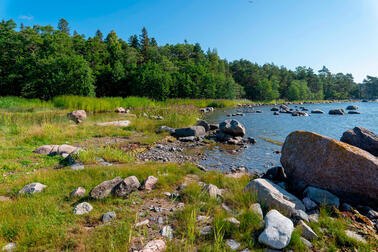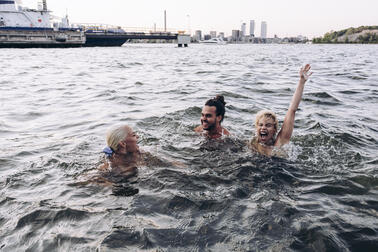
The environmental protection targets for 2040 are a part of the City’s sustainable development endeavours. They put together goals for ecological sustainability and set long-term targets that are fundamental for carrying out consistent environmental protection.
“The targets of the Helsinki Environmental Policy for 2040 describes a state of will by which will make Helsinki a more beautiful, healthy and diverse city for its residents. Concurrently, these targets will have a beneficial effect on air quality protection, the Baltic Sea, environmental action and natural preservation for both Helsinki as well as the world’s environment around us,” says Deputy Mayor Anni Sinnemäki.
Environmental targets in the City Strategy have been supplemented with targets related to the carbon footprint. The City aims to reduce its own carbon footprint that of its procurements, as well as that of its residents. In addition to reducing emissions, we will look into ways to compensate emissions with carbon sinks to the extent that it is possible.
Despite the urban build-up, Helsinki aims to stop the loss of biodiversity in the City by 2030 and in turn, for it to begin to grow. Natural preserves on land and at sea will see their area increased to at least 10 per cent by 2040, and soil protection will be considered in all land use. These measures will also improve air quality and reduce exposure to noise. Water protection aims to significantly improve the chemical and ecological state of sea and alluvial waters by reducing rubbish on the shores and remediating streams, among others.
Giant leaps are also sought in the circular and sharing economies. Circular economy targets will be set for all City construction projects, and there is a target for reducing food waste by 50 per cent. All of the City's procurements should have ambitious environmental targets by 2030 at the latest. There is a drive to develop food purchases towards plant-based diets as well as halve the use of meat and dairy products as early as in 2025.
Environmental protection targets are implemented through comprehensive environmental management, in which Helsinki aims to become an international pioneer: its goal is that all of the City's personnel and leadership commits to the environmental targets. Its divisions, public enterprises with significant environmental impact and non-profit subsidiaries will be required to implement a certified environmental system and/or a wide-scope environmental programme that adheres to the United Nations Sustainable Development Goals.
Fulfilment of the environmental protection targets is monitored annually and reported as part of the City’s Environmental Report to the City Board.


